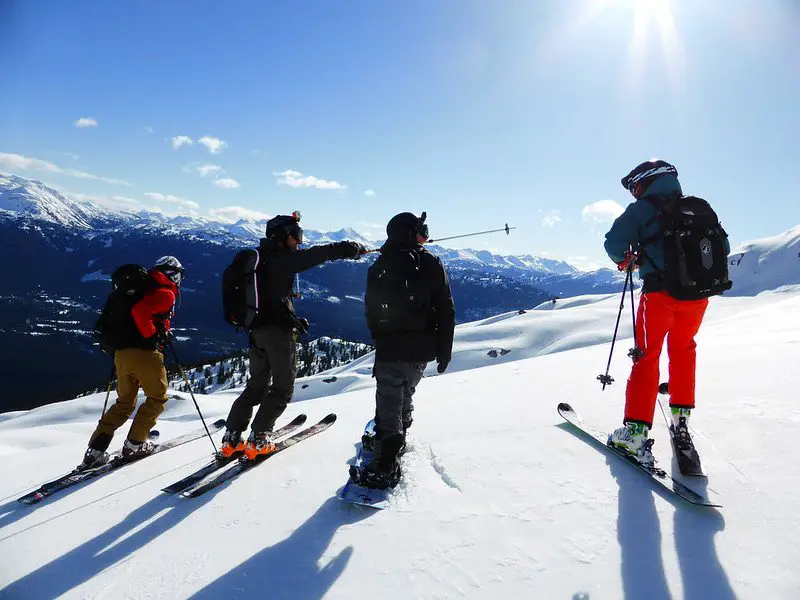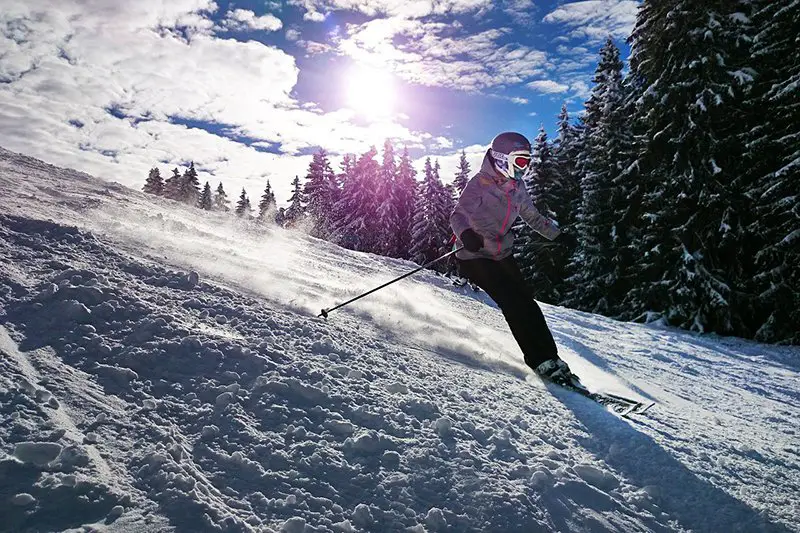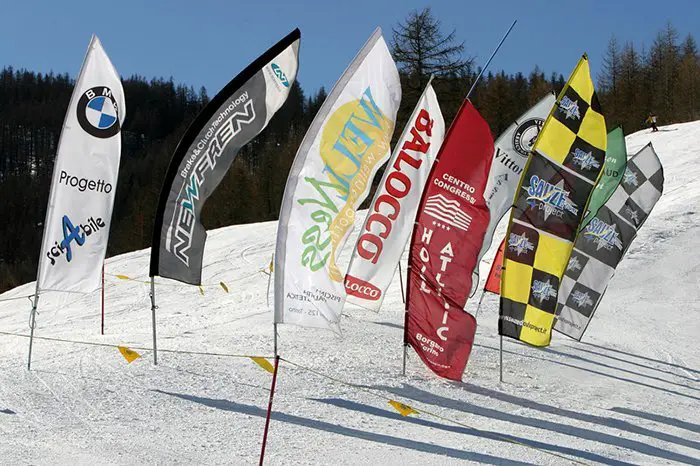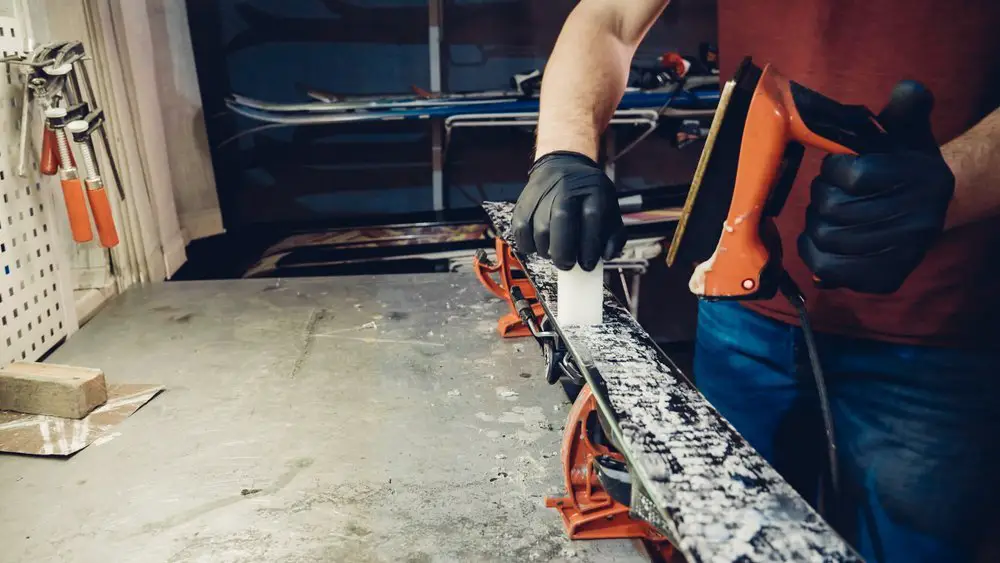If strapping on some skis and flying down the slopes sounds like something you’re up for, there are a few things you should know in advance.
Statistics show that skiing is a safe sport for most. However, skiing can also be dangerous. The more you know about the dangers and risks, the safer you will be.
So, are you afraid of your first ride down? Or maybe even scared of your first ride up the lift? Well, I’m here to tell you, don’t be! It’s an experience unlike any other, as long as you can agree to follow some rules.
Let’s get started!
Table of Contents
The Potential Dangers of Skiing
The leading cause of general or acute injury is falling, so naturally sticking to trails in your skill level and taking things at a speed you can handle is crucial to a safe ride.
Most fatal or severe skiing accidents occur due to collisions. People can collide with each other, trees or other obstacles on or off the trails. But not all accidents happen this way, there are some other major dangers when it comes to hitting the slopes. These dangers increase as the skier gets more confident and starts participating in riskier behavior, going off trail, or skiing remote spots.
Collisions
Collisions are the most common danger to skiers, and are more common in higher trafficked areas, parks, and glades or tree covered areas.
Not only can a collision with another human cause broken bones, a collision with a tree can be fatal. Head injuries account for 10-12% of all injuries at ski resorts, though the percentage rate of injury is incredibly low at .003% per day. Collisions happen mostly due to careless skiing, not following signs correctly, or even purposefully challenging yourself to a jump, or more dangerous area than your skill level. By sticking to trails you know you can handle, wearing a helmet, and only skiing on high visibility days, you can prevent collision proficiently.
I have had the unique opportunity to be married to a once Ski Patrol member of Sugarloaf Mountain in Maine. Back in the 2013-2014 season she was the first responder to a fatality involving a 21-year-old male, on skis, going far too fast on a blue square, not wearing a helmet, and crashed into a tree. It’s devastating. A horrific experience for everyone involved, and can be so easily prevented.
Avalanches
It is estimated on average, over the last ten years, that 28 people per year die from avalanches in the United States. They are caused by skiers venturing on new pathways, or unmonitored areas that don’t get groomed or inspected. The skier’s weight and speed shifts the layers of packed snow, causing them to collapse.
This natural disaster can be devastating, and there is no real way to prepare for one. They can happen unexpectedly and quickly. The best way of staying safe from the threat of avalanche is to stick to monitored trails.
Tree Wells
Tree wells happen when a portion of the tree’s canopy is buried in snow. It causes the surrounding area to appear to have more snow than it does.
Falling into one can bury a person in a matter of seconds. Lack of oxygen and the pressure of the snow will cause SIS or snow Immersion Suffocation, and death. Staying a safe distance away from trees after heavy snowfall and skiing with a partner are the best ways to prevent serious injury in this manner.
Hypothermia and Frost Bite
These are temperature related issues, and can be prevented easily in most situations. Wearing proper attire is a must while on the mountain. Not only the temperature of the air, but wind chill can produce some pretty harsh negative degree temperatures. Before heading out, make sure to wear layers, a hat, and waterproof mittens or gloves. Staying warm and dry is not only the way to prevent hypothermia and frost bite, but it’s the best way to ensure an enjoyable ride.
Skiers Thumb
Skiers Thumb is an overextension of the thumb resulting in a torn ulnar collateral ligament. It happens mostly from breaking a fall with your hand while holding poles.
It can be avoided by not falling, just kidding, falling is unavoidable sometimes! But if you do fall, let go of your poles before you hit the ground. Injuries due to falling lessen with slower speeds also, so even though going fast may give you a rush, going slow is a better bet for avoiding smaller injuries like this.
ACL Injuries
Anterior cruciate ligament tears happen in the knee when the leg rotates abruptly. It is a common injury in many physical sports. In skiing, ACL injuries account for 16-17% of injuries that get reported from ski resorts, but the chances of it happening to you on any given day is .005%.
It can happen in a number of ways, but usually high-risk behavior is involved. Staying safe on the trails and knowing your limits will steer you clear of this injury. There are other forms of lower extremity injuries, MCL and tibial injuries are among the most common.
Equipment Failure
Equipment failure is rare, and gets more rare every year with upgrades to boots and bindings. But not too long ago, leg injuries were far more common than they are today.
Though it does still happen. When I was 9-years-old my new bindings failed to release after a fall, the result, a cracked knee cap. I was in a full length leg cast for 6 weeks. The reason I fell though was because I was participating in high risk behavior, going too fast, by myself, on a trail with a ski lift. It was a recipe for a bad situation, and that’s what I got.
Ski Lift Injury
There have been a total of 13 fatalities over the last 38 years due to ski lifts. This makes your chance of getting hurt this way super rare!
The fatality rate comes in at only .316 people per year. The “lifties”, as they are lovingly called by co-workers, run a pretty tight operation. They can slow down and even stop the lift very quickly, and generally keep an eye out for beginners. Missing the chair and slipping underneath may be embarrassing, but it’s rarely damaging physically. The biggest threat is a malfunction of the equipment, or falling.
Is Skiing Dangerous for Beginners?

Skiing is not inherently dangerous for begginers. By sticking to the easier “green circle” trails, your risk of injury is fairly low.
That being said, even the best of skiers follow basic rules of the trails and slopes but what’s interesting is that the more experienced you get, the more chances for danger there are. So for beginners, that can follow a few simple rules, skiing can be as safe as riding a bike.
As you gain experience and start venturing down more dangerous trails at higher speeds, your risks obviously increase. The best advice I can give to a beginner is taking a lesson. You may want to go with someone more experienced who says they’ll teach you, but take caution. Once experienced skiers get going they can forget to look back, I know from experience. They get caught up in their ride and forget all about the newbie trying desperately to follow them. If you get yourself into this situation, alone on a trail, it’s best you know the basics like how to stop, safe places to stop to avoid collision, and how to read the trail signs.
How to Stay Safe While Skiing
The leading cause of general or acute injury while skiing is falling, so naturally sticking to trails in your skill level and taking things at a speed you can handle is crucial to a safe ride.
The biggest cause of fatal injury on the mountain is collision, like mentioned above, and there are a few simple things you can do to lower your risk of broken bones and head injury, the two leading injuries caused by collision.
First off, take a lesson, learn the basic rules of the mountain, what the signs mean, and how to stop and control your speed. Second, wear a helmet! This may not protect from broken bones, but head injuries are the leading cause of death while skiing. And third, avoid high-risk behavior. This may mean sticking to green circle, easy trails for a while, going a comfortable speed for you, and avoiding the park. This also means staying away from trees. Even with a helmet, high speeds can put a person at risk of death if they collide with a tree.
How Many People are injured a Year Skiing?
According to the National Ski Areas Association, only 29 catastrophic incidents were reported during the 2019-2020 ski season. This falls way below the ten-year average of 45 people per year. The majority of these injuries were males, 23 men and 6 women, on intermediate, or blue square trails. 72% of these people were wearing helmets.
This number seems to go down as time passes due to advances in equipment and helmet wearing trends. However, 42 fatal incidents were reported during the 2019-2020 season, mostly from collisions. 83% of these deaths were males between the ages of 21 and 30, skiing on intermediate or advanced, blue square or black diamond, trails.
Like mentioned above, there are other acute injuries one can suffer from as well. Knee injuries are among the most common, with reports stating they make up between 27% to 41% of all skiing injuries.
It is also worth noting that over half of all fatalities that occur on the ski mountain are from acute cardiac events. So if a heart condition is a concern for you, you may want to speak to your doctor before getting into this sport.
Statistics source: NSAA.org
Is Cross Country Skiing Safe?
Yes! Cross Country Skiing is quite safe, especially when compared to alpine or downhill skiing. That however doesn’t make it easy, it can put strain on certain areas of the body. Knee and lower back pain is commonly experienced due to the repetitive nature, and distances traveled while participating in this sport.
These pains can be avoided by using proper techniques and strengthening hip and core muscles. Loosing control is a possibility in certain areas, and falls and collisions can sometimes be unavoidable. However, at much slower speeds than downhill skiing, the most common injuries are sprains of the ankle, knee, wrist, and thumb.
Is Skiing Safer than snowboarding?
The evidence seems to show skiing and snowboarding are equally dangerous. Snowboarding produces fewer fatalities than skiing, but more acute injuries.
These injuries occur for the same reasons for snowboarders as they do for skiers, risky behavior. Of course, accidents do happen, but when it comes to the majority of injury cases, they happen due to inappropriate behavior. The average age of hurt snowboarders also appears to be younger than that of skiers.
Final thoughts
So is skiing safe? The answer is yes, but your behavior on the mountain and your skill level will determine your personal risk.
Fatality and catastrophic injury rates are low, and acute injuries happen more often on a snowboard. If all of this still has you worried about downhill or alpine skiing, giving cross country skiing a try could be a fun and satisfying alternative! But the facts are in and chances are, especially if you’re a beginner, you won’t get hurt this season on the slopes.



